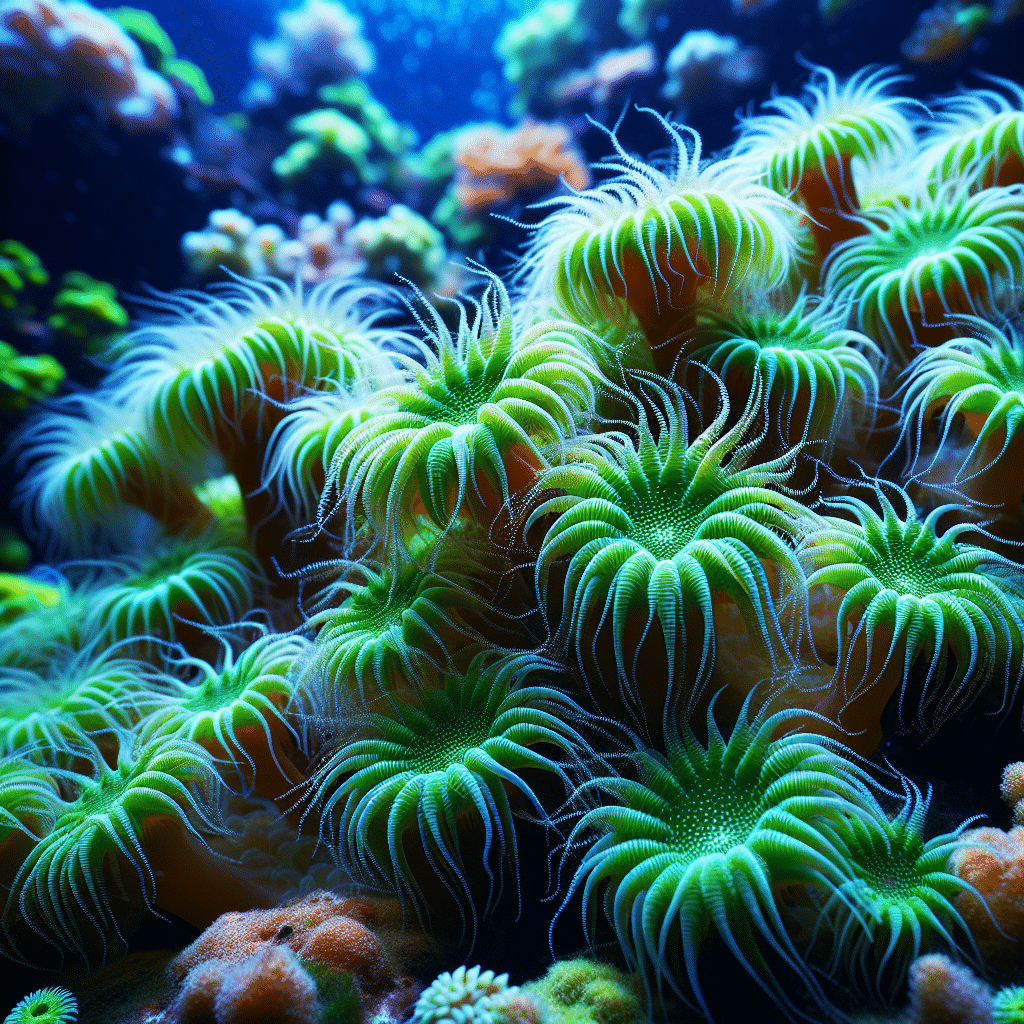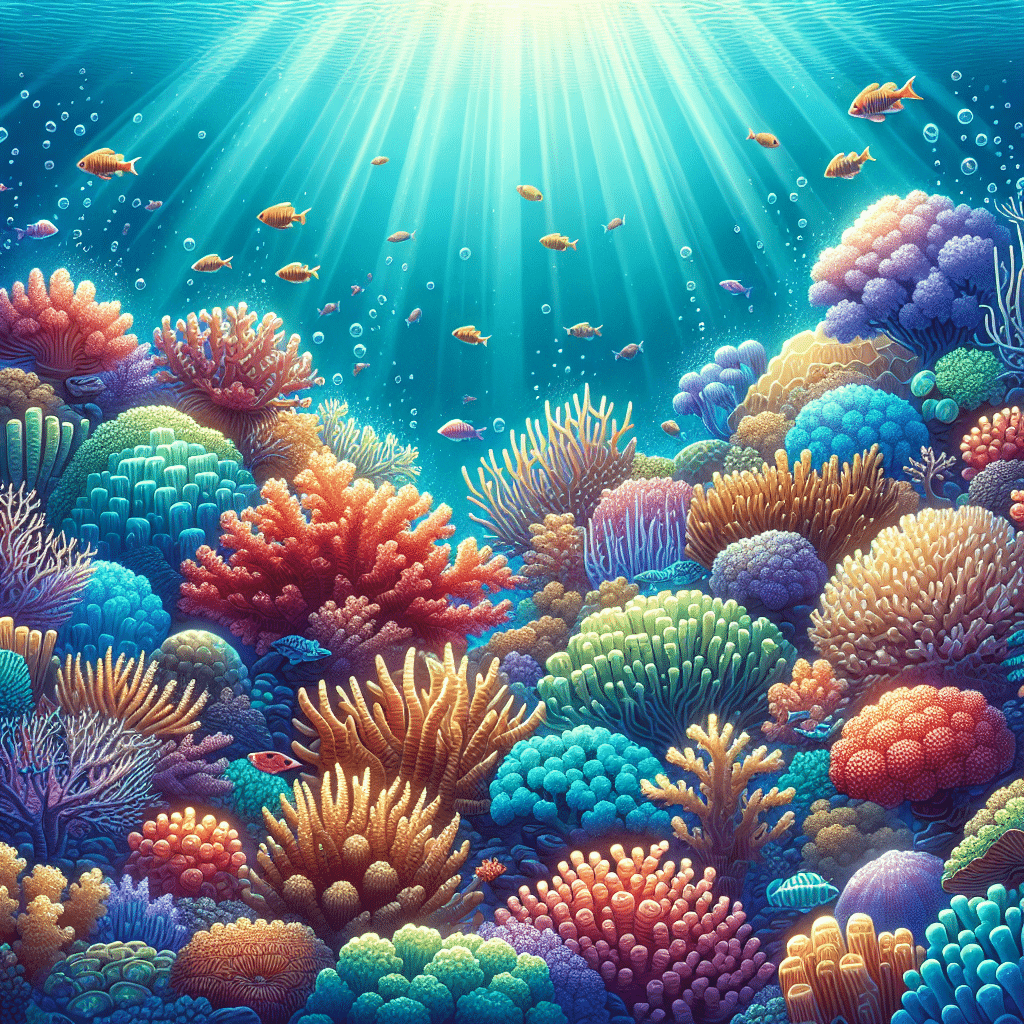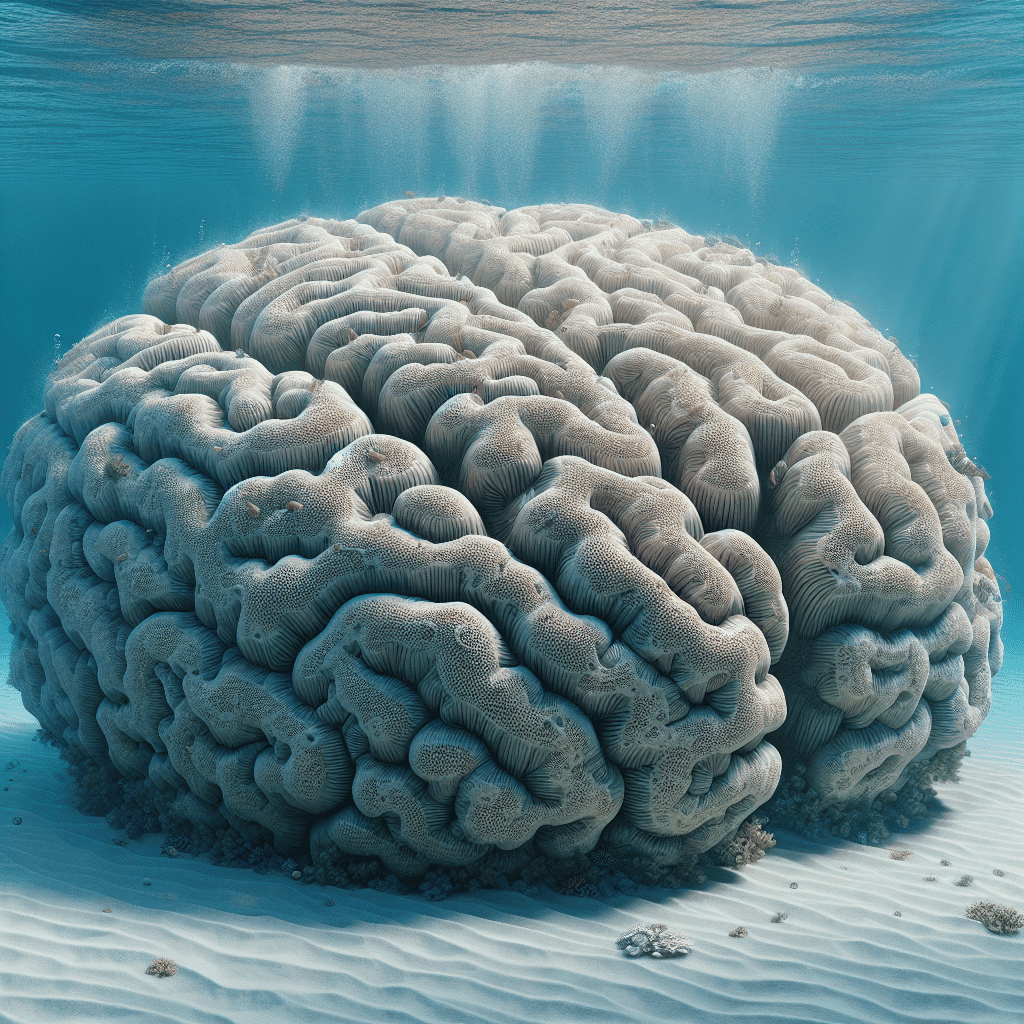Exploring Green Star Polyps
Introduction to Green Star Polyps
I’ve always been fascinated by the vibrant colors and unique structures of corals in my reef tank, and one of my favorites has to be the green star polyps, scientifically known as Pachyclavularia violacea. These corals are not just visually stunning; they also add a lively touch to any aquarium. With small, yellow or green tentacles attached to a purplish-red mat, green star polyps create an eye-catching display that can really enhance the overall look of a reef tank.
These soft corals are known for their rapid growth and can quickly cover a significant area, making them a popular choice for both novice and experienced aquarists. For those looking to add a splash of color and movement to their tanks, green star polyps are definitely worth considering.
Characteristics of Green Star Polyps
Green star polyps have distinct characteristics that make them stand out in the coral world. Each polyp features eight smooth, thin tentacles that surround a star-shaped opening. The attractive contrasting colors of these tentacles can add a vibrant aesthetic to any tank setup.
Here are some key characteristics of green star polyps:
| Feature | Description |
|---|---|
| Scientific Name | Pachyclavularia violacea |
| Colony Size | Up to 1 foot (0.3 m) |
| Polyp Size | Less than 0.5 inches (1.3 cm) in diameter |
| Behavior | Generally open during the day; close at night or when disturbed |
| Feeding | Tiny filter feeders absorbing organic matter and housing zooxanthellae |
Green star polyps are primarily found in shallow to moderate depths along upper reef edges of the Indo-Pacific Ocean (Dallas World Aquarium). They thrive in environments where they can filter feed and benefit from the photosynthetic nutrients provided by their symbiotic algae, known as zooxanthellae. This relationship not only aids their growth but also contributes to their stunning appearance.
For anyone interested in learning more about different types of corals, I highly recommend checking out other fascinating species like xenia or brain coral. These corals each have their own unique care requirements and characteristics, making the world of reef tanks endlessly interesting.
Green Star Polyps Care Guide
Caring for green star polyps can be a rewarding experience, especially when you see how quickly they thrive in your tank. Here’s what I’ve learned about their optimal growth conditions, nutritional needs, and the best placement for them in a reef tank.
Optimal Growth Conditions
Green star polyps (GSP), scientifically known as Pachyclavularia violacea, are quite adaptable but do best under specific conditions. They thrive in moderate to strong water flow and moderate to high light levels, typically ranging from 100 to 250 PAR. While they can survive in lower light, their growth and nutrient production may suffer. Here’s a quick overview of their optimal conditions:
| Growth Condition | Ideal Range |
|---|---|
| Light | 100 – 250 PAR |
| Water Flow | Moderate to strong |
| Temperature | 72 – 78°F (22 – 26°C) |
| pH | 8.1 – 8.4 |
For more detailed information on different coral types, feel free to check out our section on corals.
Nutritional Requirements
Green star polyps have a symbiotic relationship with photosynthetic algae called zooxanthellae, which provide them with essential nutrients. Additionally, they absorb nutrients directly from the water column. GSP typically remains open during the day to maximize photosynthesis and retracts at night. Here’s a breakdown of their nutritional needs:
| Nutritional Source | Description |
|---|---|
| Photosynthesis | Utilizes light via zooxanthellae |
| Water Column Absorption | Absorbs dissolved nutrients from the water |
Incorporating some liquid coral food can enhance their growth, especially in a well-maintained reef tank.
Placement in Reef Tank
When placing green star polyps in the reef tank, it’s essential to find a suitable spot that aligns with their growth preferences. They can be positioned on rocks, the back wall, or even the substrate. Here’s what to keep in mind:
| Placement Consideration | Recommendation |
|---|---|
| Light Levels | Low to medium positions preferred |
| Flow Rate | Moderate to strong currents |
| Space | Allow room to grow; they can outcompete other corals |
Due to their rapid growth rate—up to 1 inch per month under optimal conditions (Reef2Reef)—it’s important to monitor their spread to prevent them from overtaking other corals, such as xenia or brain coral.
By ensuring that green star polyps have the right conditions, nutrition, and placement, you can enjoy their vibrant growth and beauty in your reef tank.
Green Star Polyps Propagation
Rapid Growth Rate
Green star polyps are known for their impressive growth, sometimes reaching up to 1 inch per month under optimal conditions (Reef2Reef). This rapid expansion can make them a vibrant addition to any reef tank. Their hardy nature allows them to thrive in a variety of environments, making propagation not only easy but also rewarding for hobbyists.
Here’s a quick overview of their growth characteristics:
| Growth Metric | Rate |
|---|---|
| Monthly Growth | Up to 1 inch |
| Tolerance to Fragging | High |
Fragging Techniques
Fragging green star polyps is a straightforward process due to their resilience. I’ve found that these corals respond well to being cut. Here’s how I typically go about it:
- Prepare Your Tools: Use a pair of clean scissors or a sharp blade for cutting.
- Select a Fragment: Choose a healthy section of the coral to cut. Aim for a piece that includes a few polyps and some of the base.
- Make the Cut: Carefully cut the selected fragment from the main colony, ensuring you leave enough of the base attached.
- Glue Down the Frag: Use coral-safe glue to attach the frag to a rock or plug. This helps it establish a new home in your tank.
- Allow for Recovery: Place the new frag in a suitable location with good light and flow, and let it grow.
Green star polyps are highly tolerant of fragging, which means that they can be propagated easily. This has led to aquaculture becoming the primary source of GSP in the hobby, as wild specimens are less commonly found (Fragbox). With the right care, these frags can flourish and expand, contributing to the beauty of your reef setup.
If you’re interested in their care, make sure to check the sections on corals or explore specific types like xenia or brain coral.
Green Star Polyps in the Wild
Natural Habitat
Green star polyps, scientifically known as Pachyclavularia violacea, thrive in the warm waters of the Indo-Pacific Ocean. They typically inhabit shallow to moderate depths along the upper edges of reefs. These areas provide the ideal conditions for their growth, allowing them to form beautiful colonies that can reach up to one foot (0.3 m) in size, with individual polyps measuring less than 0.5 inches (1.3 cm) in diameter (Dallas World Aquarium). The vibrant colors of their yellow or green tentacles against a purplish-red mat create a stunning visual effect, making them a favorite among reef tank enthusiasts.
Behavior and Feeding Habits
In terms of behavior, green star polyps are generally quite active during the day. They remain open, showcasing their striking tentacles, but will close up at night or when disturbed (Dallas World Aquarium). As tiny filter feeders, they absorb organic matter from the surrounding water column, which helps sustain their growth and health.
Additionally, green star polyps have a symbiotic relationship with zooxanthellae, which are photosynthetic algae cells that live within them. These algae provide essential nutrients to the coral, primarily through the process of photosynthesis. This means that while they benefit from filtering food from the water, they also rely on light to support their algae, making proper lighting conditions vital for their care in an aquarium setting.
For those interested in keeping green star polyps in a reef tank, understanding their natural habitat and behavior can greatly enhance the success of maintaining a healthy and vibrant coral environment. If you’re curious about the care required for these beautiful corals, be sure to check out our guide on corals and other related species like xenia and brain coral.
Common Issues with Green Star Polyps
Environmental Stressors
Green Star Polyps (GSP) are generally hardy corals, but they can still be affected by changes in the tank environment. Factors such as water flow, lighting, and nutrient levels play a significant role in their well-being. When these elements fluctuate, GSP may retract and close up, which is a clear sign of stress (Reef2Reef).
Here are some critical parameters to monitor to keep your Green Star Polyps happy:
| Parameter | Ideal Range |
|---|---|
| Salinity | 1.023 – 1.025 |
| Temperature | 75°F – 80°F |
| Nutrient Levels | Low to moderate |
It’s essential to maintain stable water parameters. Sudden changes can lead to stress, causing GSP to retract or close up. Monitoring interactions with other species in the tank is crucial, as aggressive corals or the presence of anemones can also affect their health (Reef2Reef).
Disease Prevention and Management
Cyanobacteria, often referred to as Red Slime Algae, can be a common issue for GSP. The presence of this algae usually indicates elevated nutrient levels in the tank. Addressing nutrient imbalances is vital to prevent its growth and ensure the health of your corals (Reef2Reef).
To prevent diseases and manage the health of Green Star Polyps:
- Regular Water Changes: Maintaining clean water is crucial. Aim for 10-20% water changes every 1-2 weeks to keep nutrient levels in check.
- Monitor Feeding: Be cautious not to overfeed your tank, as excess nutrients can lead to algal blooms.
- Check for Aggressive Species: Keep an eye on tank mates. Aggressive corals can stress out your GSP, leading to retraction or death.
By keeping a close watch on these factors, I can ensure that my Green Star Polyps thrive in my reef tank. For more information on coral care, check out our articles on corals such as xenia and brain coral.
Green Star Polyps Aquarium Tips
Setting up a reef tank with Green Star Polyps (GSP) can be exciting, but it’s important to consider their specific needs and compatibility with other corals. Here are some tips to help ensure a thriving environment for GSP.
Tank Setup Recommendations
Green Star Polyps are known for their rapid growth and can quickly take over space in your aquarium. To manage their growth, I recommend placing GSP on a separate rock or structure away from other corals. This helps prevent them from outcompeting or choking out neighboring species, as they tend to spread aggressively (Reef Chasers).
GSP thrives best in moderate to strong water flow and moderate to high light conditions, ideally within a PAR range of 100-250. While they can adapt to lower light levels, their growth and health may be compromised. To set up your tank effectively, consider the following table for optimal conditions:
| Parameter | Recommended Range |
|---|---|
| Light (PAR) | 100-250 |
| Water Flow | Moderate to Strong |
| Placement | Separate Rock |
Compatibility with Other Corals
When it comes to compatibility, Green Star Polyps can be sensitive to their tank mates. They may close up if placed near aggressive corals or anemones. Monitoring the interactions between different species is essential to maintain tank harmony (Reef2Reef).
Here are some coral types that generally coexist well with GSP:
- Zoanthids: These hardy corals often share similar lighting and flow needs.
- Mushroom Corals: These can tolerate a range of conditions and are less likely to be outcompeted by GSP.
- LPS Corals (e.g., Duncan, Hammer Coral): These corals can thrive alongside GSP, provided there’s enough space between them.
Corals to avoid placing near GSP include:
- Xenia: May compete for space and nutrients.
- Acropora: Can struggle if GSP grows too close.
Careful planning and consideration of coral compatibility can lead to a beautiful and diverse reef tank. By following these guidelines, I’ve found that my GSP and other corals thrive together, creating a vibrant aquatic ecosystem. For more information on maintaining various types of corals, feel free to explore our articles on corals and specific types like mushroom coral or torch coral.
Sustainable Coral Practices
Importance of Aqua-Cultured Sources
As I explore the world of corals, I find that supporting aqua-cultured sources is crucial for the sustainability of our reef ecosystems. Green star polyps (GSP) are often cultivated rather than harvested from the wild, making them an excellent choice for hobbyists concerned about environmental impact. These corals are hardy and tolerant of less-than-ideal conditions, which makes them suitable for beginners (Fragbox).
By choosing aqua-cultured GSP, I help reduce the pressure on natural coral reefs, which are increasingly threatened by climate change, pollution, and overharvesting. Aqua-cultured corals not only promote healthier reef ecosystems but also encourage responsible aquaculture practices that can lead to more sustainable marine environments.
| Benefits of Aqua-Cultured Corals |
|---|
| Reduces pressure on natural reefs |
| Promotes responsible aquaculture practices |
| Supports biodiversity |
| Offers resilient specimens for beginners |
Company Spotlight: Reef Chasers
One company that stands out in the coral aquaculture community is Reef Chasers. They focus on providing high-quality, sustainably sourced corals, including green star polyps. Their commitment to eco-friendly practices ensures that the corals they offer not only thrive in home aquariums but also contribute to the preservation of marine ecosystems.
Reef Chasers offers a variety of corals, including soft, hard, and LPS corals. They emphasize the importance of responsible sourcing and educating hobbyists about proper care and maintenance. You can check out their extensive collection and learn more about their sustainable practices by visiting Reef Chasers.
By supporting companies like Reef Chasers, I feel good knowing that I am contributing to a more sustainable future for our oceans while enjoying the beauty of green star polyps and other corals in my reef tank.



